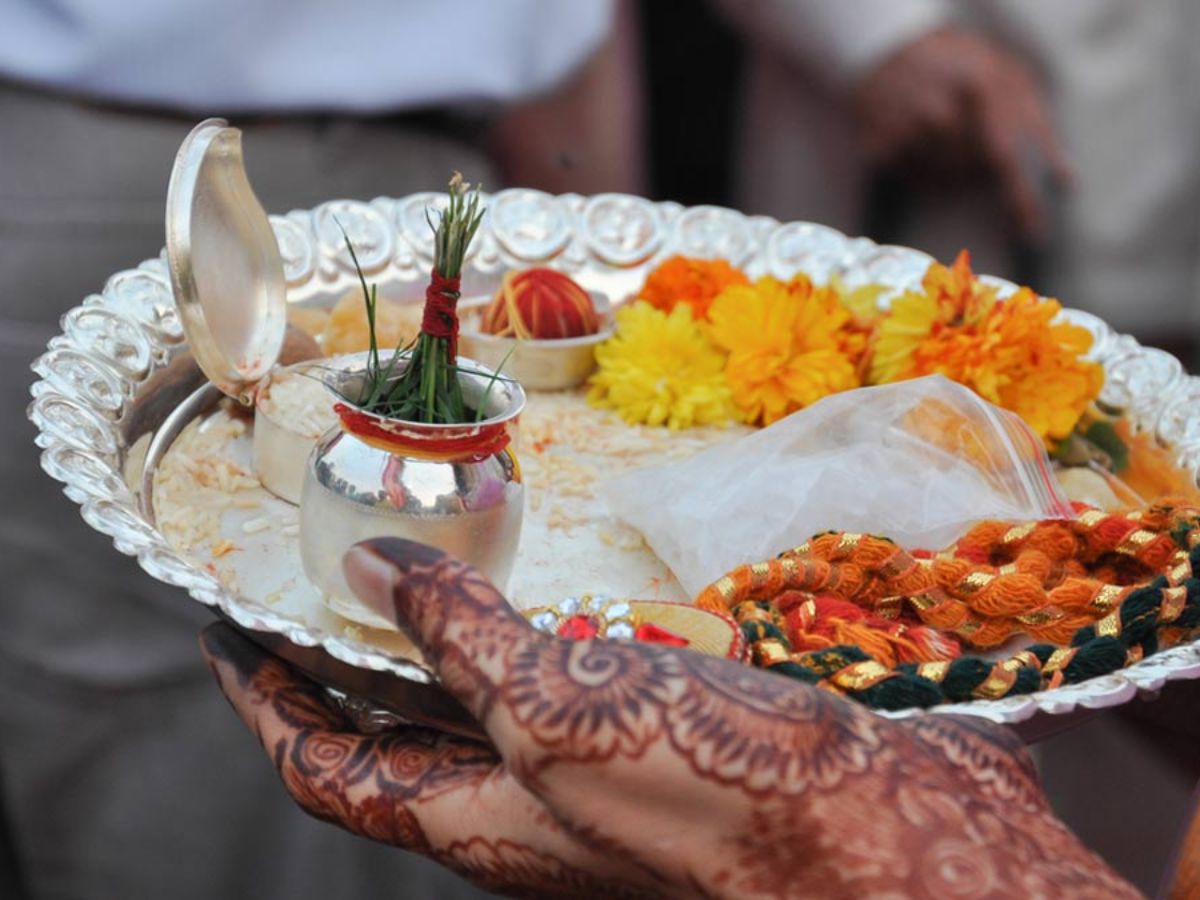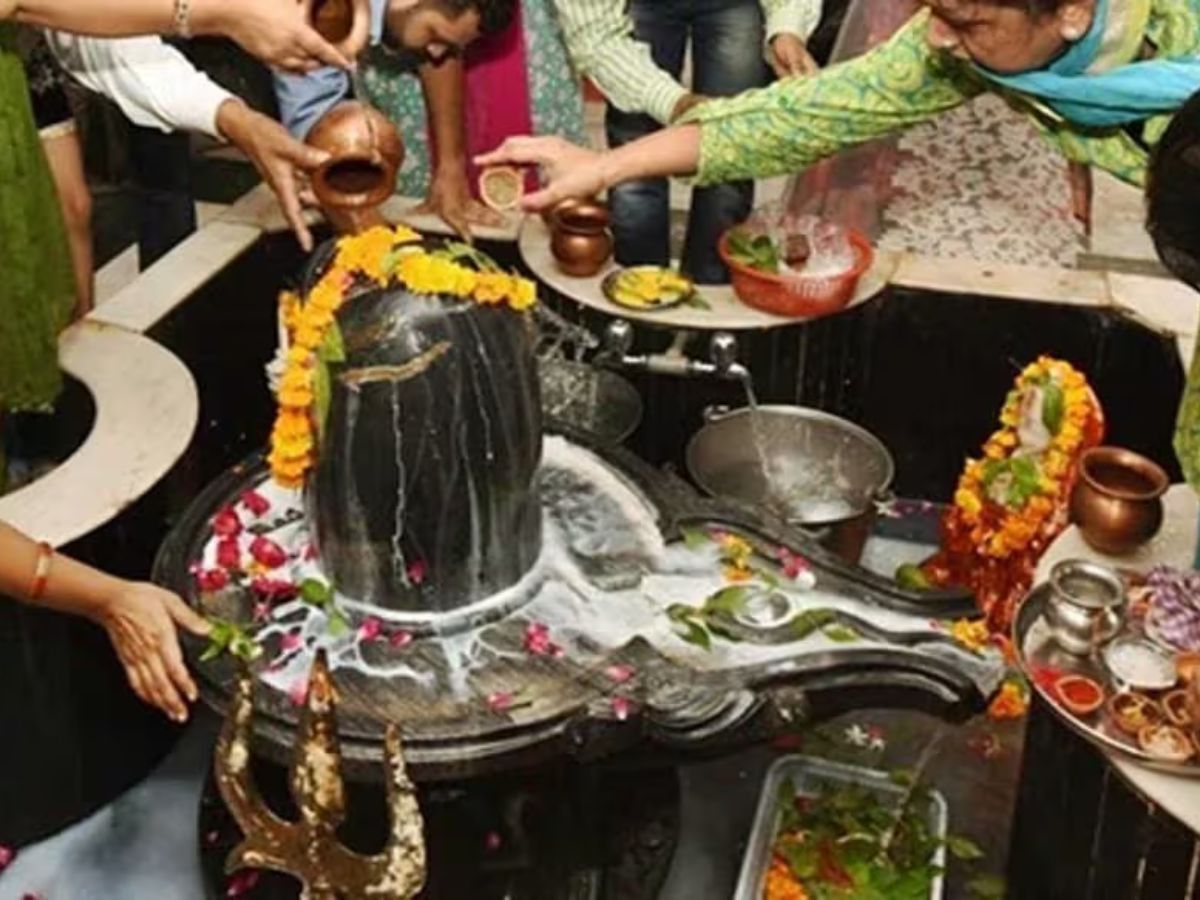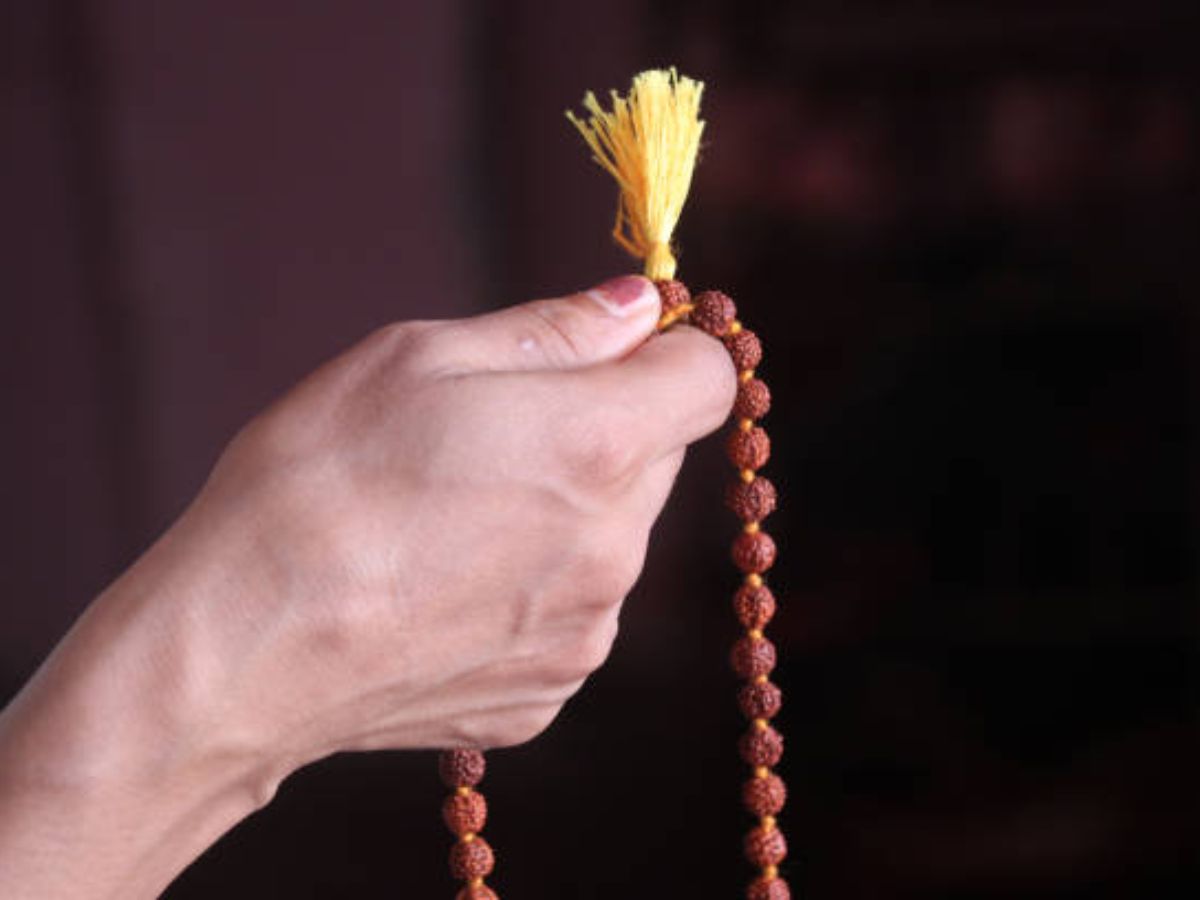Top Shivratri Rituals That Devotees Should Follow For Positivity And Blessings
Maha Shivratri is one of the most sacred Hindu festivals dedicated to Lord Shiva. Devotees observe a day-long fast, perform Abhishekam by bathing the Shiva Linga with sacred offerings, and offer Bel Patra and flowers, which are dear to Lord Shiva. Chanting of “Om Namah Shivaya” continues throughout the day and night, creating a spiritual atmosphere. The night is spent in Jagran, where devotees sing bhajans and recite Shiva’s stories to stay awake and immersed in devotion. These rituals symbolize purification, dedication, and a deep connection with Lord Shiva.

Fasting for Lord Shiva – Puja Thali Preparation
This beautifully arranged puja thali is prepared by devotees observing a fast on Maha Shivratri. It includes a kalash with durva grass, marigold flowers, rice, sacred thread (mauli), and other offerings used during the worship of Lord Shiva. The thali represents purity, devotion, and readiness for performing rituals like Abhishekam and chanting after a day-long fast.

Abhishekam of Shiva Linga
The Shiva Linga is bathed with sacred items like milk, water, honey, curd, and ghee, symbolizing purification and reverence.

Offering Bel Patra and Flowers
Bel Patra, dhatura, white flowers, and fruits are offered to please Lord Shiva, as they are considered sacred symbols

Chanting “Om Namah Shivaya”
Devotees chant the powerful mantra "Om Namah Shivaya" continuously, invoking Shiva’s divine energy and blessings.

Night-Long Jagran and Bhajans
A night vigil with bhajans, kirtans, and stories from Shiva’s life is held, celebrating his divine marriage and power.





